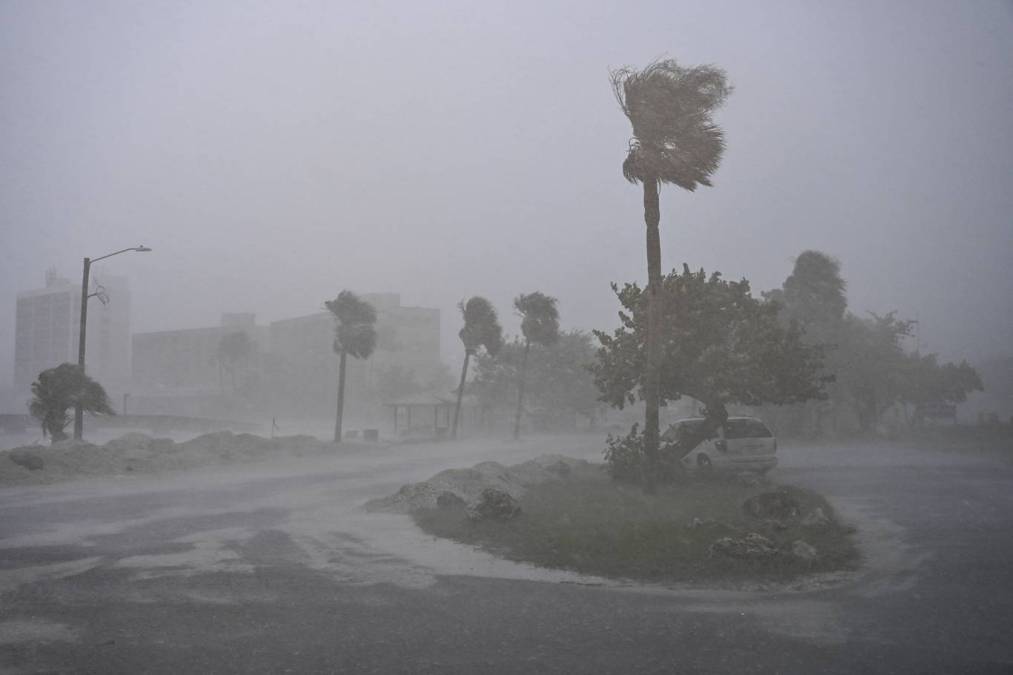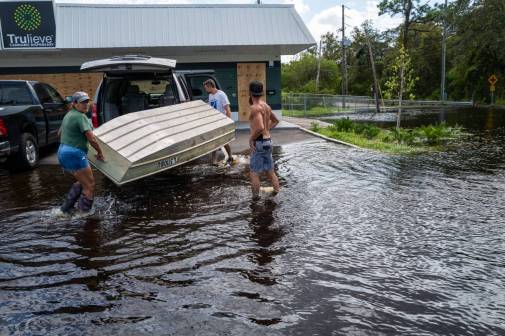Florida debuts emergency communications tool in wake of Hurricane Milton

As Florida responds to Hurricane Milton, which made landfall Wednesday evening near Sarasota with wind speeds of up to 120 miles per hour, the state’s Division of Emergency Management and the University of Florida on Thursday launched a new tool designed to provide emergency responders and local governments a reliable method to issue alerts to the public.
The Broadcast Emergency Alerting and Communication Operational Network, or BEACON, uses artificial intelligence to convert text into speech for AM radio broadcasts, allowing government officials and emergency personnel to craft important public alerts quickly, freeing up emergency responders to focus on other tasks as they respond to the deadly Category 3 hurricane.
As of 11:30 a.m. local time Thursday, nine deaths have been confirmed and millions remain without power.
A spokesperson for Futuri, the technology company that helped develop the tool, told StateScoop it’s ready to be used “at a moments notice anywhere it is needed at the request of local officials.”
BEACON provides news broadcasters with a real-time dashboard, where local government officials and emergency responders can post messages ready for broadcast as new information emerges. Messages can also be translated into Spanish, the second-most spoken language in Florida, according to the U.S. Census Bureau.
“We identified a gap in the timely delivery of critically important messaging to the public, affording us the opportunity to introduce new resilient infrastructure in Florida’s hardest hit disaster areas,” Kevin Guthrie, executive director of the Florida Division of Emergency Management, said in the announcement.
‘None of that was available’
The system is designed for use with AM radio signals, which have longer wavelengths cell phone tower signals, allowing radio stations to reach remote and rural areas. Cell towers also often go down during a hurricanes and tropical storms, due to high speed winds and flooding.
Craig Fugate, a former Federal Emergency Management Agency administrator and senior adviser to the BEACON project, told StateScoop that AM radio towers also radiate signals from their entire structures, making them less susceptible to storm disruptions.
Hurricane Milton struck Florida Wednesday evening, less than a two weeks after Hurricane Helene, a Category 4 hurricane with winds reaching 140 miles per hour, caused power outages throughout the state and decimated mountain towns in North Carolina and Tennessee.
Fugate, who lives in Gainesville, Florida, said that when he lost power during Hurricane Helene last month, he couldn’t receive updates from emergency administrators.
“So cells were out. Internet was out, I could still make a phone call and I could send texts, but I got no data. I couldn’t see where the storm was. I couldn’t tell if it was passing yet or visit my go-to websites to get updates. None of that was available,” he said, adding that BEACON is built to withstand during power outages by using backup satellite feeds like SpaceX’s Starlink.
Despite the National Hurricane Center’s warnings about catastrophic rainfall and flooding before and during Hurricane Helene, more people died from inland flooding than coastal storm surges, because of debris fields and impassable roads complicated search and rescue efforts, Fugate said.
At least 227 people died from Hurricane Helene, though some are still unaccounted for, the Associated Press reported last Saturday.
Fugate said the unexpected inland damage from Hurricane Helene exposed gaps in emergency communication, when first responders and local officials rely on cell and internet service to deliver information to the public.
“Most of the information in the beginning the first couple of days was only available by radio,” Fugate said about communication efforts in the aftermath of Hurricane Helene.
Tampa, where Hurricane Milton was expected to make landfall before the storm veered south, last June expanded its collection of mass communication tools, layering methods of outreach so emergency management officials and residents can access crucial information and communicate during life-threatening situations, even if cell service or internet are knocked offline.
Fugate said most cloud services are not built to be resilient.
“They’re inefficient systems. Very few companies make the kind of investments to build the resiliency required,” Fugate said. “Today’s switch from the old copper to fiber cables linking to transmitters, which is what cell sites are, hasn’t been as resilient.”
AM radio in vehicles
Despite the resiliency of AM radio systems for emergency communications — and that many residents use their vehicles to find shelter, food and safety — several automakers, including Tesla and Ford, have stopped putting AM radios in their electric vehicles, according to a 2023 report by the Center for Automotive Research that claims their electric motors interfere with signal quality.
The AM Radio for Every Vehicle Act, introduced last May by Massachusetts Sen. Ed Markey, would require all new passenger motor vehicles to have devices that can access AM broadcast stations. The bill is still being deliberated by Congress.
In February, Fugate and six other former FEMA officials wrote a letter to Transportation Secretary Pete Buttigieg advocating for the preservation of AM radio and urging regulators pass legislation to protect the nation’s public safety. In the letter, they argue that removing AM radios from cars is “a grave threat to future local, state and federal disaster response and relief efforts.”






